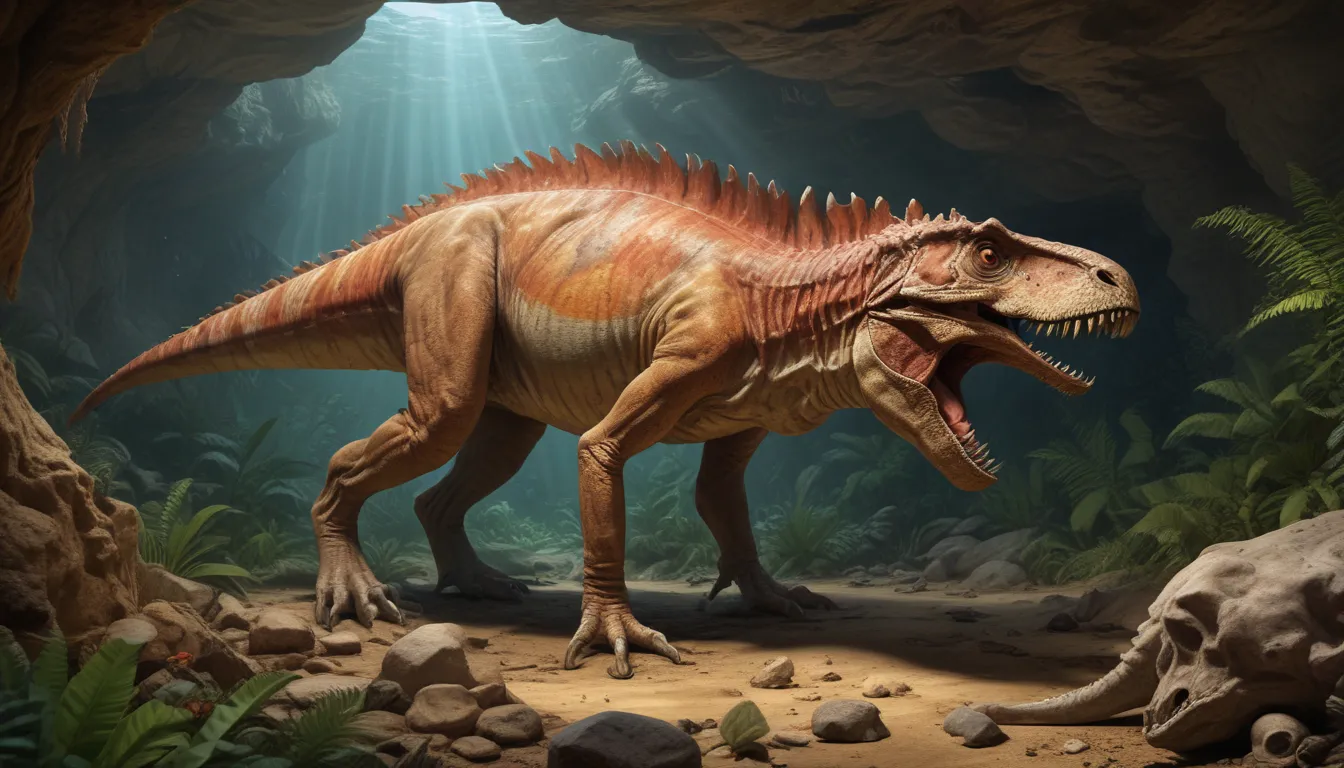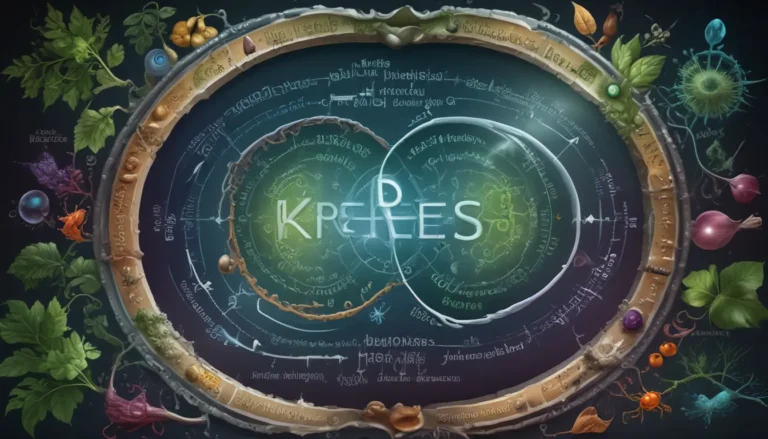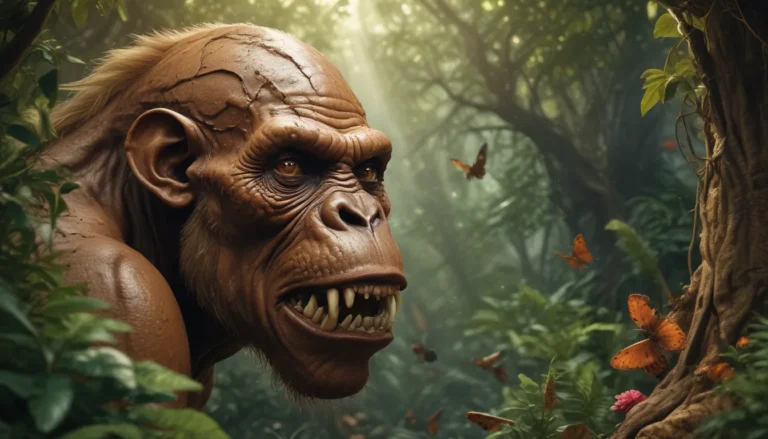A Note About Images: The images used in our articles are for illustration purposes only and may not exactly match the content. They are meant to engage readers, but the text should be relied upon for accurate information.
Evolutionary paleontology is a captivating field that offers a window into the history of life on Earth, showcasing the intricate processes that have shaped the diverse array of species over millions of years. By studying fossil records, scientists can unlock the mysteries of evolution, providing valuable insights into the origins and development of life on our planet. In this article, we will embark on a fascinating journey through the realm of evolutionary paleontology, delving into 20 intriguing facts that illuminate the wonders of this discipline. From ancient hominid fossils to evolutionary lineages, each fact unveils a piece of the puzzle that is life’s journey on Earth. Join us as we explore the captivating world of evolutionary paleontology and uncover some mind-boggling revelations!
Unraveling the History of Life on Earth
Evolutionary paleontology aims to unravel the complex evolutionary processes that have shaped the diversity of life over millions of years. By studying fossils, scientists can piece together the story of how different species have evolved and adapted to their environments, providing a deeper understanding of life’s journey on our planet.
The Hidden Stories Within Fossils
Fossils are the preserved remains or traces of ancient organisms that offer a unique glimpse into the history of life on Earth. These relics hold the secrets of past life forms, allowing scientists to reconstruct the evolutionary history of various species and understand how they have changed over time.
- Fossils are invaluable evidence of past life forms, offering a tangible link to the ancient organisms that once roamed the Earth.
- The oldest known fossils date back over 3.5 billion years, providing insight into the early life forms that inhabited our planet’s ancient oceans.
Unlocking the Mysteries of Fossil Study
Paleontologists utilize a variety of techniques to study fossils, including excavation, laboratory analysis, and advanced imaging technologies. By examining the intricate details of fossilized remains, scientists can decipher the evolutionary clues embedded within these ancient relics.
- Transitional fossils bridge the evolutionary gaps between different species, showcasing the gradual changes and adaptations that occurred during the evolutionary progression.
- The discovery of the dinosaur fossil “Archaeopteryx” provided compelling evidence for the theory of evolution, supporting the idea of birds evolving from dinosaurs.
Delving into Exceptional Fossil Deposits
The Burgess Shale in Canada is a fossil deposit of exceptional significance, containing exquisitely preserved fossils from the Cambrian period. These fossils offer valuable insights into the early diversification of life on Earth, shedding light on the evolutionary processes that have shaped our planet’s biodiversity.
- Fossilized footprints, known as ichnology, provide information about ancient animal behavior, offering insights into the locomotion patterns and social interactions of extinct species.
- Mass extinctions have occurred throughout Earth’s history, with the Cretaceous-Paleogene extinction event being one of the most famous examples, leading to the demise of the dinosaurs and numerous other species.
Interdisciplinary Collaborations in Paleontology
Paleontologists often collaborate with other scientific disciplines, including geologists, biologists, and climatologists. This collaborative approach enables scientists to gain a comprehensive understanding of Earth’s history, integrating multiple perspectives to unravel the mysteries of our planet’s past.
- Molecular paleontology utilizes DNA analysis to study ancient organisms, uncovering genetic information and exploring evolutionary relationships.
- The study of ancient pollen, known as palynology, provides insights into past vegetation and ecosystems, revealing the distribution of plants and ecological conditions of bygone eras.
Uncovering Remarkable Fossil Discoveries
China has been a hotspot for remarkable fossil discoveries, including feathered dinosaurs, early primates, and fossilized remains of ancient human ancestors. These findings offer a glimpse into the rich tapestry of life that has existed on our planet throughout history.
- The International Code of Zoological Nomenclature governs the naming of new fossil species, ensuring that each species is given a unique scientific name to prevent confusion in scientific literature.
- The field of evolutionary paleontology continues to evolve with new discoveries, driven by advancements in technology and exploration techniques that enable scientists to uncover previously unknown fossils and rewrite our understanding of the past.
Gaining Insights into Our Place in Evolutionary History
By studying evolutionary paleontology, we can gain insights into our own place in the history of life, exploring the processes and patterns of evolution to understand the origins of our species and the interconnectedness of all living organisms.
- Evolutionary paleontology contributes to medical research, offering insights into ancient anatomy and genetics that can aid in the development of new treatments and enhance our understanding of human health.
- By studying patterns in the fossil record, scientists can make educated predictions about future evolutionary trends, shedding light on the direction of biological evolution.
Captivating the Imagination and Inspiring Discovery
Evolutionary paleontology continues to captivate scientists and the public alike, illuminating the wonders of evolution and the vastness of the natural world. Through its exploration of ancient life forms and the processes that have shaped them, this field offers a compelling journey through time, unveiling the incredible diversity and resilience of organisms throughout history.
In conclusion, evolutionary paleontology is a captivating field that offers a fascinating window into the history of life on Earth, providing valuable insights into the origins and development of various species. By unraveling the fossil record, researchers continue to expand our understanding of how organisms have adapted and evolved over millions of years, shaping our knowledge of the present biodiversity on our planet. Evolutionary paleontology acts as a bridge between the distant past and the present, connecting the dots of life’s intricate journey and showcasing the remarkable changes that have shaped life on Earth.
FAQs
-
What is evolutionary paleontology?
Evolutionary paleontology is the scientific study of the history of life on Earth, focusing on the evolution and development of species through the examination of fossil records. -
How do paleontologists determine evolutionary relationships?
Paleontologists use a variety of methods to determine evolutionary relationships, including analyzing anatomical features, genetic data, and the geological context of fossils. -
What is the significance of the fossil record in evolutionary paleontology?
The fossil record provides a rich source of information about past life forms, enabling scientists to reconstruct the evolutionary history of organisms and understand how they have changed over time. -
How does evolutionary paleontology contribute to our understanding of evolution?
Evolutionary paleontology provides direct evidence of evolutionary processes, allowing scientists to observe and study the changes that have occurred in organisms over millions of years. -
Are there any controversies in evolutionary paleontology?
While there may be debates and differing interpretations of certain findings, the fundamental principles of evolution and the importance of paleontological evidence are widely accepted within the scientific community.
Uncover the mysteries of ancient life through evolutionary paleontology, where each fossil tells a story of adaptation and evolution. Join us on this thrilling adventure into the past, where the wonders of evolution await discovery.






